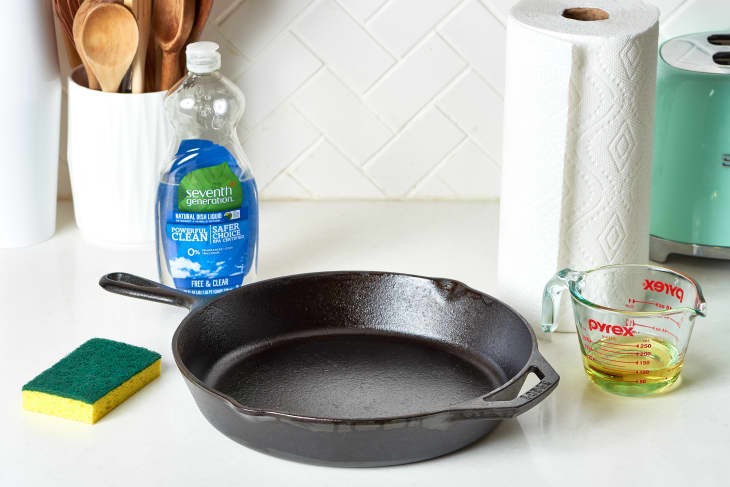How To Season a Cast Iron Skillet
I love my cast iron skillet. It’s one of my most-used kitchen tools. It’s the perfect vessel to cook a pork chop, crisp up some chicken thighs, or even bake a batch of brownies. I love being able to transfer things from the stovetop to the oven with ease. While this kitchen tool has many uses, it’s best to keep it in good condition. Cast iron, when seasoned properly, it lasts for many lifetimes.
I’m sure most of you have memories of your grandparents or even great-grandparents lugging out their heavy-bottomed skillets and frying up dinner. There’s a reason these pans get passed down from grandparent to grandchild. To keep it in good condition, you just have to know the science behind the seasoning process and how to do it. It’s super easy to clean, too!
I’m going to show you how to easily season your cast iron skillet and keep it in great working order! Let’s get to seasoning!
How To Season a Cast Iron Skillet
What You Need
Materials
- Dish soap
- Sponge or stiff brush
- Clean, dry cloths or paper towels
- Vegetable oil or shortening (or other oil of your choice)
- Aluminum foil
Instructions
- Get ready: Gather your supplies and then preheat oven to 350°F.
- Wash the skillet: Wash the skillet with warm, soapy water and a sponge or stiff brush. Cast iron should not normally be washed with soap, but it’s fine here since the pan is about to be seasoned.
- Rinse and dry: Rinse and thoroughly dry the skillet with a clean, dry cloth or paper towels.
- Add oil: Pour a little vegetable oil or melted shortening into the skillet. A tablespoon or two is plenty. Vegetable oil and shortening are the most commonly recommended oils used for seasoning, but according to Lodge, you can use any oil of your choice.
- Rub: Use a clean cloth or paper towel to rub the coat around the entire skillet.
- Flip the skillet over: Don’t forget the outside — and bottom — of the skillet. You want a thin coat of oil around the entire piece.
- Bake the skillet: Place the skillet upside down on the oven’s center rack. Place a sheet of aluminum foil below the rack to catch any drips. Bake for an hour.
- Let the skillet cool: Turn off the heat and allow to the skillet to cool completely before removing from oven. Once it’s cooled down, you’re good to go!
Note
- A seasoned skillet is smooth, shiny, and nonstick. You’ll know it’s time to re-season if food sticks to the surface or if the skillet appears dull or rusted.
